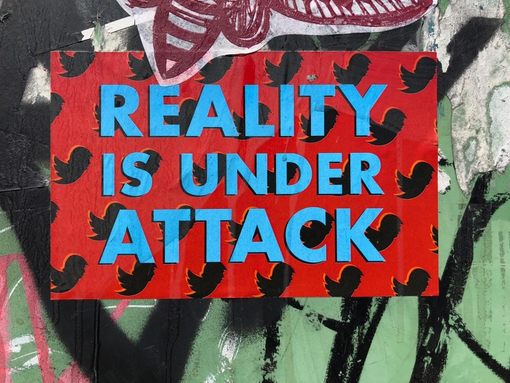
Photograph by Nathaniel St. Clair
American democracy is under fire partly because news organizations are being coopted by President Trump and his handlers. I have studied the nature and impact of news for 45 years. Anyone who has followed the news recently is aware that President Trump’s numerous tweets dominate the news cycle and change the focus from day-to-day, especially with network news. News organizations increasingly let him set the agenda, even if they might challenge some statements.
The latest examples of President Trump’s focused domination of the news are his “walk back” about denying Russian influence in the 2016 elections, as well as the tweets attacking NATO and U. S. allies, followed by the President’s denials that he had issued the attacks. President Trump’s tweetable news is not his fault; he simply takes advantage of entertaining news formats that were created by news organizations that favored dramatic visuals with emotional appeal—especially fear– in the pursuit of high ratings. Twitter also does this.
As NYT Pulitzer Prize winner Maggie Haberman stated recently, “[Twitter] is a place where people who are understandably upset about any number of things go to feed their anger, where the underbelly of free speech is at its most bilious.”
News organizations permit this with Presidential politics, albeit with occasional disclaimers and challenges to the blatant lies, because of two things: First, there is a commitment to report daily and heavily on the President; Second, news coverage—especially TV– is guided by an entertainment format that prefers evocative drama, conflict, and violence.
It was estimated that in the first two months of the 2016 presidential campaign, Donald Trump received more than three times the coverage of his political opponents. The CEO of CBS said of Trump’s candidacy, “It may not be good for America, but it’s damn good for CBS.” CNN’s President admitted, “We put him on because we you never knew what he was going to say.”
Politicians and others seeking media dominance know that media logic guidelines virtually insure coverage, especially if there is a good visual. Journalism was fundamentally changed as politicians and others began framing their performances according to the time, place, and manner of entertaining formats that journalists preferred.
As President Reagan’s White House Chief of Staff, Michael Deaver, explained more than 30 years ago in an editorial in The Washington Post: “The point is that rather than inventing the effective visual or the 30 second sound bite, we simply adapted an existing TV news technique that was already widely used.”
Welcome to the post-journalism era: No longer was the journalist separate from the topic, issue, or thing being covered; they were now covering performances they had inadvertently orchestrated. This logic still operates today, but has been expanded with social media, especially twitter.
President Trump, a reality TV star, knows all too well that strident and outrageous tweetable statements will be covered and will take precedence over other issues, including ongoing significant investigations of Russian collusion in the 2016 election. As a colleague put it, President Trump has become a meme in his own right, a cultural symbol of discord and membership—you are for him or against him—regardless of the message.
Unlike other Presidents, who had to rely on the news media for initial statements, he has hung on to his tweetable phone to send daily tweets to faithful followers, including the news media. More often than not, those messages would be repeated in newscasts. Indeed, recent research by Oliver Hahl, et al, demonstrates that many supporters regard even false tweets as evidence of the President’s authenticity as an outsider against the establishment. As long as his attacks dominate news coverage, he will win because he controls the entertainment format of the news cycle, and journalists will continue to be manipulated. That cycle must be broken. Here’s how.
1) In general, get twitter out of the news. Readers/viewers can be directed to other sites for detailed comments.
2) President Trump’s actions other than tweeted words should dominate news coverage. Indeed, this will encourage more press conferences. Generally, comments should not be retweeted, but rather, summarized only if relevant to the U. S., including specific issues, policies, groups, demographics, international relations.
3) Frame reports in terms of, for example, the White House, the administration, Congress, international relations/allies, etc., rather than “The President”. For example, why do tariffs matter to U. S. workers and consumers?
4) Provide updates on major issues, policies, investigations, hearings.
These are just a few suggestions to have journalism pivot back to its central role in a free society. Our democracy depends on it.